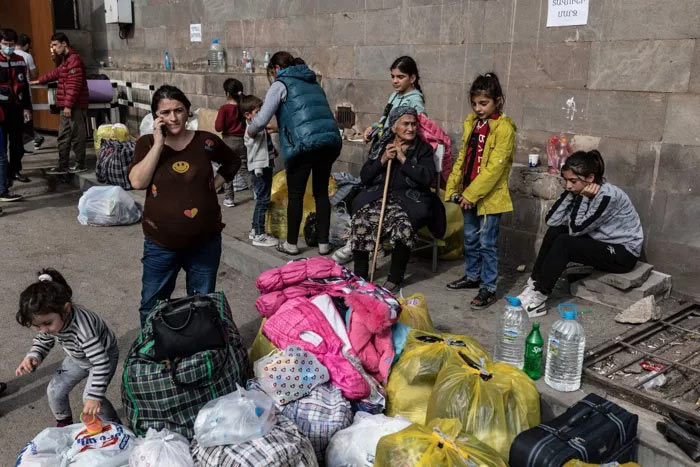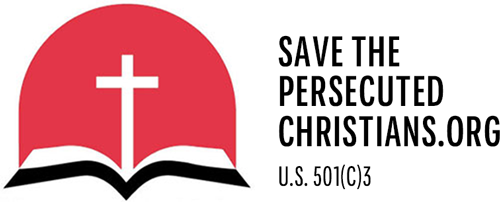The plight of Artsakh Christians and their dream to return home: ‘Forgotten by everyone’

Ethnic cleansing survivors feel left behind in Armenian peace deal
By Samuel Smith | The Christian Post | October 26, 2025
YEREVAN, Armenia — Born and raised in her ancient Christian homeland of Artsakh (known internationally as Nagorno-Karabakh), 34-year-old legal professional and human rights advocate Marina Simonyan has spent her entire life under the shadow of violence and conflict, living through three different wars.
Like many from the Republic of Artsakh, which was a predominantly Armenian autonomous region within the internationally recognized borders of Muslim-majority Azerbaijan, speaking about the horrors of what happened leading up to and during the September 2023 invasion by Azerbaijan that forced over 120,000 people to flee is not easy. But these are stories that she feels the world must hear, as her people struggle to start new lives as refugees in Armenia proper.
“I was born in the 1990s, and when my parents were telling me what happened during the ’90s, I was skeptical. I was telling them, ‘Well, we are living in the 21st century, and it is highly unlikely that something like that will happen again,'” Simonyan told reporters gathered for a September witness testimony event organized by the advocacy organizations Save Armenia and the Center for Truth and Justice, admitting that her assumption proved to be incorrect.
“As a member of the fact-finding team, I have seen and I witnessed situations that one could not imagine, even in their worst nightmare. … What we witnessed, what actually happened, it was just Azerbaijan going on the offensive against the peaceful civilians. It’s not just a story, but it is a record, well noted by the Human Rights Defenders Office. They would go into the villages, torture people, rape women.”
She cited the example of one family in which elderly civilians were dismembered by Azerbaijani soldiers who broke into their house. Ears, tongues and necks were cut and mutilated, she recalled, saying there were “multiple cases like this.”
Although recollections like this are difficult to tell, Simonyan believes it’s essential that the brutal realities of what her people were subject to not be forgotten by the international community, as the cultural erasure of one of the world’s most ancient Christian homelands has received scant attention in the last two years, drowned out by other global crises.
Leaders with the Artsakh government-in-exile are also voicing their displeasure in the wake of the Aug. 8 peace agreement and memorandum of understanding between Armenia and Azerbaijan brokered by President Donald Trump at the White House, feeling the terms leave the people of Artsakh behind and solidify the injustices carried out against them under the leadership of Azerbaijani President Ilham Aliyev’s regime.
Armenia and Azerbaijan have disputed control of the Nagorno-Karabakh region since the early 1990s, following the collapse of the Soviet Union. After a 44-day war with Azerbaijan in 2020, 70% of Artsakh territory came under Azerbaijan’s control. Beginning in December 2022, Azerbaijan starved and deprived the other 30% of Artsakh through a 10-month military blockade before ultimately taking complete control of the territory in September 2023.
During the blockade, Simonyan said civilian populations were cut off from food, hot water, gasoline and electricity. Kids were forced to walk to school in the freezing temperatures. Residents resorted to mixing water with soil to make salt. There were significant problems for pregnant women during this time due to the lack of gasoline and food. She said pregnant mothers were forced to walk miles to get to the hospital, and many faced vitamin deficiencies, causing them to lose their babies.
The Human Rights Defenders Office took note of several people who starved to death during this period, while Azerbaijani forces shelled and bombed civilian populations, apologizing to Russian peacekeepers for killing civilians in front of them, she stated.
“Despite all those struggles, we thought we would be strong until the end,” she said, adding that the Artsakh Armenians had no intention of leaving their homeland. “During the blockade, I was telling them nothing worse could happen. But we saw that it could be worse.”
‘We had to leave our homeland’
Azerbaijan’s offensive began in the region’s capital, Stepanakert, on Sept. 19, 2023, around 1 p.m., a time that children were in school and the communication service was down, Simonyan detailed. Parents frantically tried to call to see where their children were, and one child suffered a stroke, she added.
“From my office, I saw the smoke and fog and shooting. There was this promise that they would give us three months for us to collect our belongings. But it was a sudden offensive,” Simonyan said. “Every day, we would visit the hospitals, morgues. Day by day, the number of injured and tortured would increase. I can never forget that there were so many bodies, that some bodies were left on the floor.”
“Because people know what the modus operandi is of Azerbaijanis — they saw it during 2020 — we had this understanding of what will happen to us if we remain.” Between 2020 and 2023, she said there were also documented instances of the taking of captives, the imposition of the blockade and other serious human rights violations.
“We didn’t have any other choice. We had to leave our homeland,” she continued. “Artsakh has always been Armenia. It never was Azerbaijanis. We had to leave our history of thousands of years, everything we had, our churches, our graveyards, our history, our memory, everything. We had to leave Artsakh.”
For the mass exodus from Artsakh, the Azerbaijanis allowed the residents access to fuel kept in a military warehouse in Berkadzor through Russian peacekeepers. However, a massive explosion at the warehouse on Sept. 25, 2023, killed around 230 people and injured many more, Simonyan said.
For residents fleeing the enclave, there was only one road connecting Artsakh with Armenia. While thousands made it safely across the border into Armenia, for many, it was a trap as Azerbaijani forces blocked the Hakari bridge. While in normal conditions it would take about two hours to travel from Stepanakert to Hakari, Simonyan said during this mass exodus, it took three days.
